Braun Design at Paul Smith Albemarle Street by das programm
A collection of 1950s and 1960s products by designers including Dieter Rams, Arne Jacobsen and Dietrich Lubs for German electricals brand Braun are on display at the new Paul Smith store in London (+ slideshow).

Collectors of Braun Design products das programm curated a selection of vintage Braun products in fashion designer Paul Smith's recently extended store on Albemarle Street in London's Mayfair district.
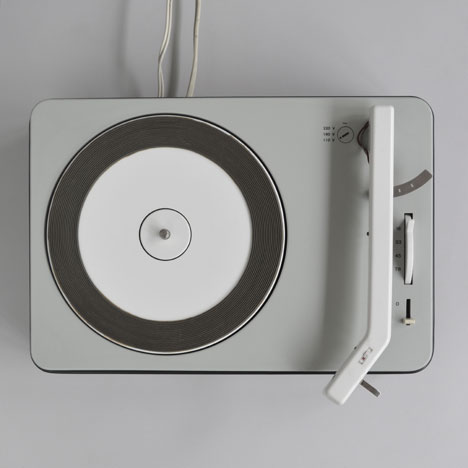
The emphasis of the small exhibition, titled White, is mainly on audio products such as radios, turntables and speaker units.
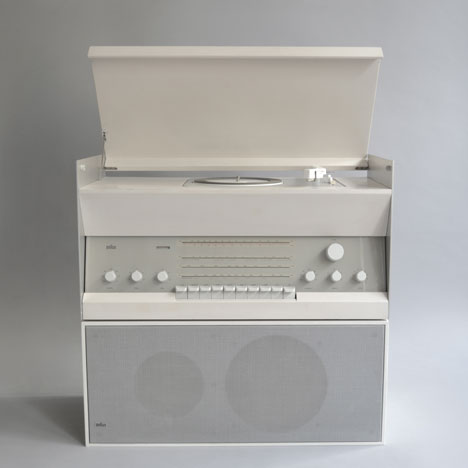
"We're showing 45 pieces, mostly 60s audio but also including some classic household designs," said das programm director Peter Kapos.
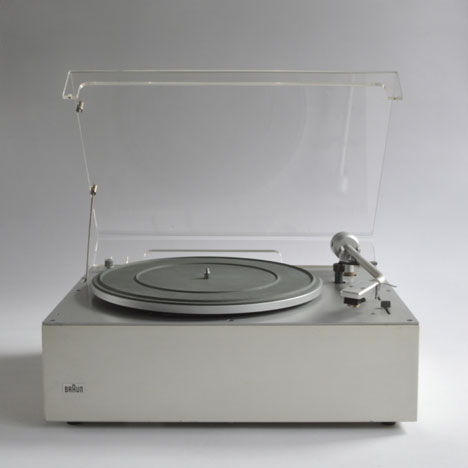
Dieter Rams was appointed director of Braun's in-house design department in 1960 and began applying the standards established by the Ulm School of Design a year earlier.
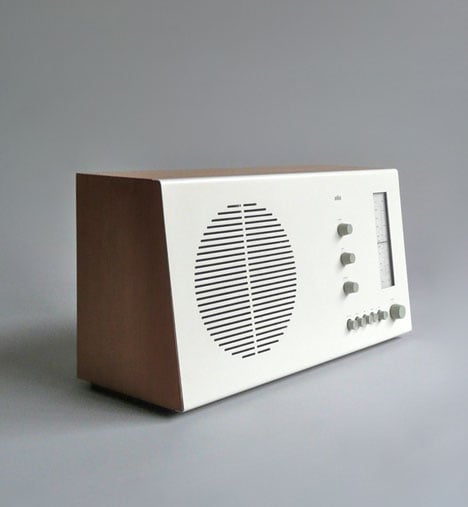
Under his direction the company became renowned for producing rational and functionalist designs, which are widely credited as Apple creative director Jonathan Ive's aesthetic reference for the computer company's products.
"The influence of Braun Design on Apple design is well documented," Kapos told Dezeen. "From the 2001 iPod onwards, Apple has been helping itself to all kinds of bits and bobs, producing a curiously accelerated collage of Braun Design."
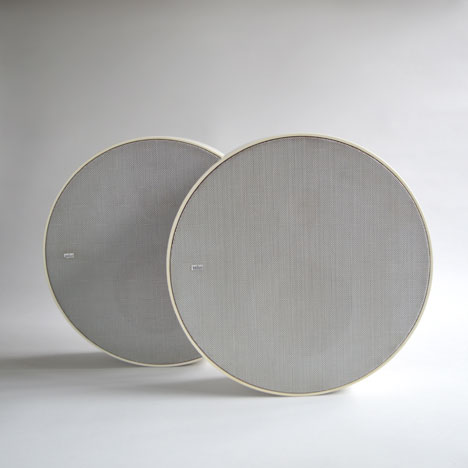
Other Braun Design members are also represented in the collection. The oldest piece in the store is Hans Guglelot's combined record player and radio from 1955, and homeware designs by Reinhold Weiss and Gerd Alfred Müller are also on show.
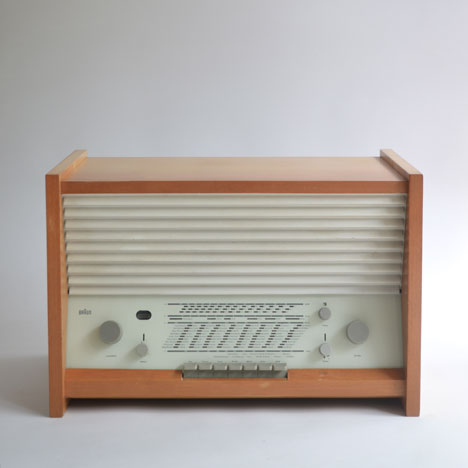
The items will be displayed in the recently opened store until 7 October and Kapos will be giving tours of the exhibition in its final week - more details here.
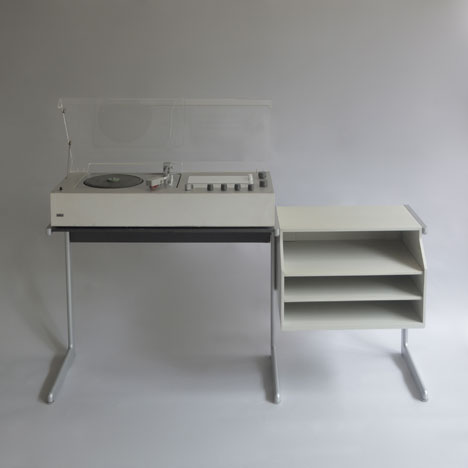
Earlier this month, Dieter Rams was awarded the Lifetime Achievement Medal from the London Design Festival, honouring "an individual who has made significant and fundamental contributions to the design industry over their career."
A few months ago furniture brand Vitsœ reissued Rams' classic 620 Chair Programme and earlier in the year a private collector put his 1000-piece archive of the designer's Braun products up for auction on eBay.
See more design by Dieter Rams »
Das programm sent us the text below:
White: overview
Amidst the architectural and cultural ruins of post-war Germany, industrial designers considered their role in the task of reconstruction. In 1953 the Ulm school of design opened. It taught that rationally organised objects of daily use might serve as models for a more rational social form and thereby guide the maelstrom of productive forces to a more acceptable result. They called this utopian project 'systems design'. The following year, the Braun Company approached the Ulm school with a brief to modernise their audio line. Designers Otl Aicher and Hans Guglelot, lecturers at the school, established the Braun style and produced the blueprint for a comprehensively integrated programm of household electronics.
The Ulm school is represented in the exhibition by two pieces: Gugelot's G 11 / G 12 record player and radio combination, issued in the 1955 the inaugural year of Braun Design, and Gugelot and Rams' SK 4 phonosuper of the following year. This pair of foundational objects are the first encountered by the visitor.
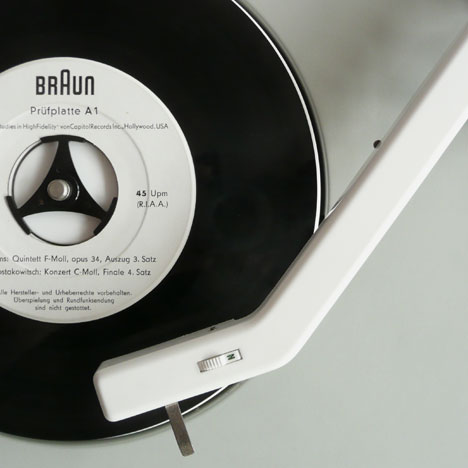
An in-house design department was established at Braun in 1960; Dieter Rams was appointed its director in 1961. You can see from the pieces on the bridge shelf how the Ulm style was both retained and transformed in the products issued after the services of Ulm freelancers had been dispensed with. Post-1960 Braun designs remain orderly and rational, according to functionalist principles. But the first designs' rather Scandinavian-modern references to nature are replaced by a more severe and emphatically industrial material vocabulary.
Just as important was the transformation in the interrelation of individual designs. The Braun audio designs of the 1960s were no longer conceived as single items related to others in the programm by a more or less common aesthetic. Now, the program was thought of as a single integrated system consisting of functionally compatible elements under a fully unified aesthetic regime. In this way the entire Braun programm of the 1960s unfolded as a unitary modular system.
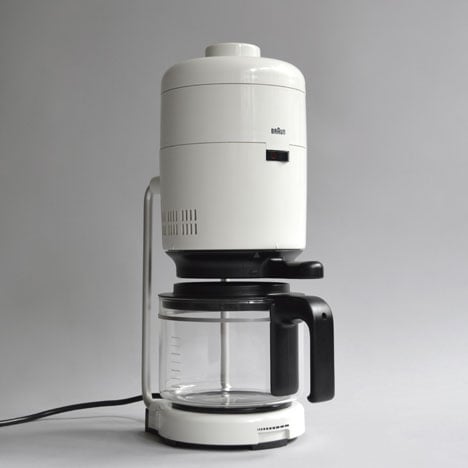
The examples presented in the main space have been selected to express the formal and functional unity and systematicity of the 60s Braun program. The audio designs of this period, all by Dieter Rams, may be divided into two groups: light weight turntables, small radios and speaker units, and larger more substantial system elements. The largest of these at the far end of the room is the Audio 1 integrated system sitting on the 'kangaroo' modular stand. Despite the formal variety, the distinctive characteristic of 1960s Braun Design is its overarching coherence. It all 'locks' together.
It’s interesting to think that at this time Dieter Rams was also drawing furniture designs on the same principles for production and sale by Vitsoe, then Vitsoe+Zapf. The idea was that audio design, furniture design (and toaster design for that matter) should fuse into a single interlocked whole – a total rational environment that we might imagine extending outwards to the design of buildings, districts and cities…

Because space is limited the emphasis of the exhibition is placed on audio products. However, the Braun program of the 1960s also encompassed extensive kitchen, misc. household, lighter, dry shaving and photography ranges. The pair of 'Das Braun Programm' posters by the till presents something of this scope.
As in the audio segment, these products related to every other as parts of a rational, aesthetically unified whole. Indeed, the graphic design of these posters itself, in its systematic arrangement on a grid, contributes to this unity, as did the design of every other piece of Braun printed material from packaging down to guarantee cards and instructions for use – see as examples the KF 1000 headphone and MX 1 111 child’s toy.
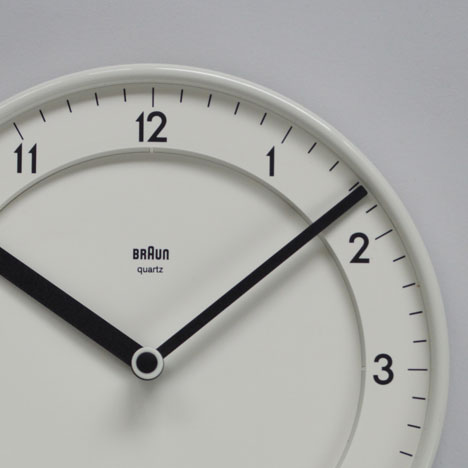
Presented on the bay of shelves are a few iconic examples of Braun household products. Of these, Reinhold Weiss' HL 1 multiwind desk fan and KMM 1 coffee grinder are particularly important. Weiss joined the Braun Company as a graduate of the Ulm School in 1960 and continued to practice systems design according to its original idea. Ram’s designs tended to be simple cubular forms. A tension between rational rigour and idiosyncrasy in the arrangement of control elements provides 'interest'. Weiss' designs, on the other hand, are both more fully abstract and three dimensional. The device is broken down into functionally discrete units – base, stem, motor block, fan head, cowl - that are then articulated as sculptural elements, a series of volumes, densities, textures and masses. The result is at once functionally and constructionally concrete, and highly abstract.
It's interesting to compare Weiss' functionalism with that of his colleague Gerd Alfred Müller, whose iconic KM 3 food processor sits on the top shelf. Müller articulates the functional elements of the device – motorblock/gearing/tool – with great clarity as distinct strata imposed upon a flowing organic form, a horizontally ordered series of cuts. This form encloses the bowl; notice how its lip aligns with the top edge of the gearing block. A distinctive feature of 1960s Braun Design is the fine balance struck between difference and identity. Rams, Weiss and Müller drew up designs with very distinct characters that nevertheless belonged unambiguously to a single programm.
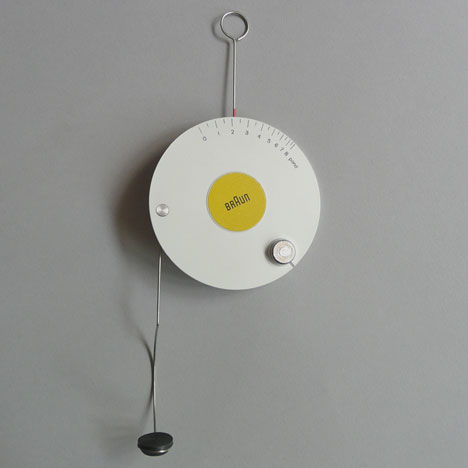
The period of Braun Design is defined as 1955 – 1995, beginning with the first of the modernist designs and ending when Dieter Rams stepped down as Director of the Design Department. However, our exhibition focuses almost entirely on designs issued before 1968. In 1968 the Gillette Company acquired a controlling share in Braun and thereafter stopped the economically irrational practice of cross-subsiding product lines. In particular, profits from the dry shaving sector, which made up the largest part of company earnings were no longer permitted to offset losses incurred by the grandiose design folly that was the Braun audio program.
Interesting as it was, outside a small group of German middle class intellectuals there just wasn’t the demand for it. Post-68 Braun Design was increasingly led by market research, which very quickly brought about the demise of the functionalist adventure in systems design. To be sure, great designs still continued to be produced at Braun after 1968. See for example the astonishing KF 21 coffee filter on the plinth opposite the shelves. But these tend to stand out as singular designs. Shaped by marketing requirements, what remained of the programm increasingly found itself reflecting existing conditions. Perhaps, the expansive 'kangaroo' system stand (of which only a small part is shown here) represents the last attempt at designing in a truly utopian mode, that is, one that reaches beyond what presently exists to something qualitatively new…
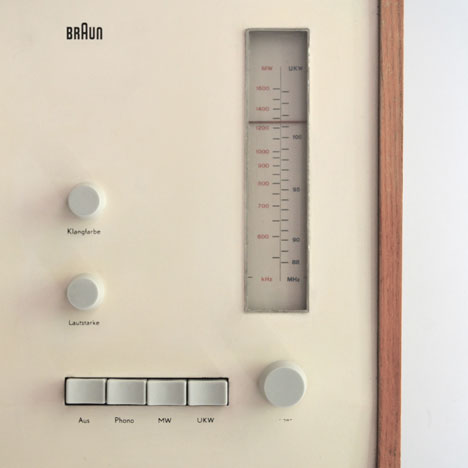
Under the present stewardship of Proctor and Gamble, owners of the Gillette Company, Braun continues to extend the company tradition of offering products of the highest quality in terms of design and manufacture. Its offering is now almost entirely restricted to personal grooming. Recently, a number of interesting discontinued products of the Braun Design period have been re-issued. Amongst these are Rams' DW 30 digital watch of 1979, Dietrich Lubs' AB 30 vs alarm clock and Rams and Lubs' superb ET 66 calculator. These are displayed for sale in the till area.